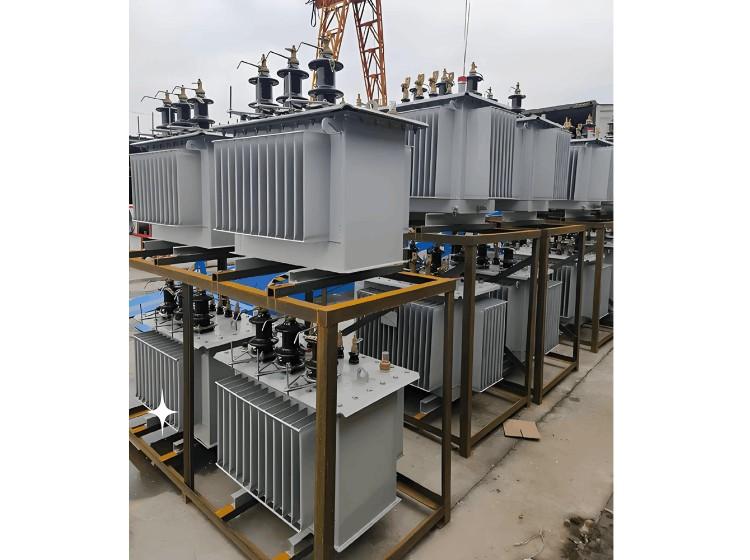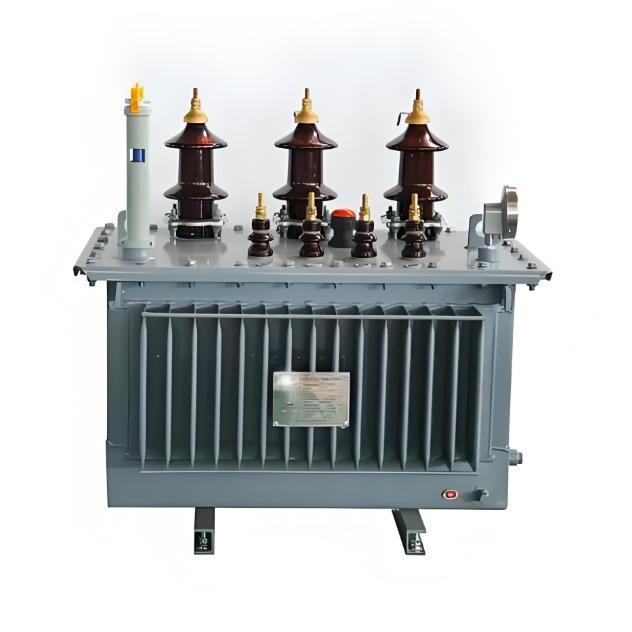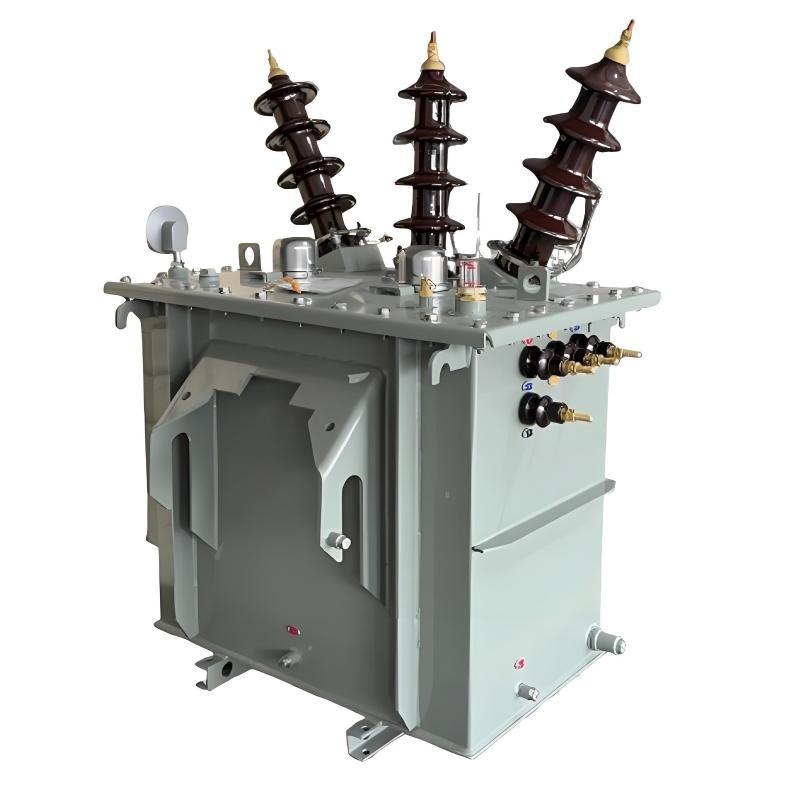Standar Pemilihan dan Konfigurasi Transformer
1. Pentingnya Pemilihan dan Konfigurasi Transformer
Transformer memainkan peran penting dalam sistem tenaga listrik. Mereka menyesuaikan tingkat tegangan untuk memenuhi berbagai kebutuhan, memungkinkan listrik yang dihasilkan di pembangkit listrik dapat ditransmisikan dan didistribusikan dengan efisien. Pemilihan atau konfigurasi transformer yang tidak tepat dapat menyebabkan masalah serius. Misalnya, jika kapasitasnya terlalu kecil, transformer mungkin tidak dapat mendukung beban yang terhubung, menyebabkan penurunan tegangan dan mempengaruhi kinerja peralatan—mesin industri mungkin melambat atau bahkan berhenti. Sebaliknya, memilih unit yang terlalu besar mengakibatkan pemborosan sumber daya dan biaya yang meningkat. Oleh karena itu, memilih model transformer yang tepat dan mengonfigurasinya dengan benar sangat penting untuk memastikan operasi sistem tenaga listrik yang stabil dan efisien.
2. Parameter Kunci untuk Pemilihan Transformer
(1) Kapasitas
Kapasitas transformer harus ditentukan berdasarkan permintaan beban aktual. Pertama, hitung total beban yang terhubung dengan menjumlahkan daya dari semua peralatan listrik. Kemudian, pertimbangkan ekspansi di masa depan. Misalnya, jika komunitas perumahan saat ini memiliki total beban 500 kW, dengan mempertimbangkan penambahan seperti stasiun pengisian kendaraan listrik, sebaiknya dipilih transformer dengan kapasitas sedikit lebih tinggi—seperti 630 kVA. Ini memastikan operasi yang andal selama puncak permintaan atau ketika beban baru ditambahkan, mencegah kegagalan akibat overload.
(2) Tingkat Tegangan
Tingkat tegangan harus sesuai dengan sistem tenaga listrik secara keseluruhan. Tingkat tegangan umum termasuk 10 kV, 35 kV, dan 110 kV. Untuk aplikasi tegangan rendah seperti peralatan rumah tangga atau peralatan industri kecil, biasanya digunakan transformer 10 kV untuk menurunkan tegangan tinggi menjadi tingkat yang dapat digunakan. Untuk fasilitas industri skala besar atau transmisi jarak jauh, diperlukan tegangan yang lebih tinggi seperti 35 kV atau lebih. Misalnya, operasi pertambangan besar dengan peralatan berdaya tinggi yang jauh dari substation mungkin menggunakan transformer 35 kV untuk meminimalkan kerugian transmisi.
(3) Jumlah Fasa
Transformer tersedia dalam konfigurasi fasa tunggal dan tiga fasa. Unit fasa tunggal biasanya digunakan untuk aplikasi kapasitas kecil dengan persyaratan keandalan yang lebih rendah, seperti rangkaian pencahayaan. Transformer tiga fasa banyak digunakan di pabrik industri, bangunan komersial, dan kompleks perumahan karena efisiensi yang lebih tinggi dan pengiriman tenaga yang lebih stabil. Misalnya, pabrik yang menggunakan motor tiga fasa dan pencahayaan mendapat manfaat dari transformer tiga fasa, yang menawarkan kapasitas yang lebih tinggi dan adaptabilitas yang lebih baik di berbagai skala beban.

3. Faktor Lingkungan dalam Konfigurasi Transformer
(1) Suhu
Suhu lingkungan sangat mempengaruhi kinerja transformer. Suhu tinggi meningkatkan hambatan gulungan, meningkatkan kerugian tembaga, dan mempercepat penuaan isolasi. Di daerah beriklim panas, sebaiknya dipilih transformer dengan kinerja pendinginan yang unggul. Misalnya, transformer pendingin udara paksa berpendingin minyak atau transformer tipe kering dengan ventilasi paksa ideal untuk substation luar ruangan di wilayah tropis. Desain ini meningkatkan disipasi panas melalui kipas atau aliran udara yang ditingkatkan. Di daerah dingin, meskipun stres termal berkurang, perhatian harus diberikan pada viskositas minyak yang meningkat, yang dapat mengganggu pendinginan. Metode pendinginan yang tepat masih harus diadopsi untuk memastikan operasi yang andal.
(2) Kelembaban
Kelembaban tinggi menurunkan kinerja isolasi. Infiltrasi kelembaban dapat mengurangi resistansi isolasi dan meningkatkan risiko arus bocor—terutama pada transformer tipe kering. Di lingkungan lembab seperti daerah pesisir atau ruangan basah, disarankan untuk menggunakan model tahan kelembaban. Unit tipe kering dapat menggunakan bahan isolasi hidrofobik atau vernis khusus untuk meningkatkan ketahanan terhadap kelembaban. Transformer berisi minyak memerlukan penyegelan yang rapat, pemeriksaan level minyak secara rutin, dan pemantauan kelembaban untuk mencegah penurunan kinerja.
(3) Ketinggian
Seiring ketinggian meningkat, kepadatan udara berkurang, mengurangi efisiensi pendinginan dan kekuatan dielektrik. Secara umum, untuk setiap 100 meter di atas permukaan laut, kapasitas output transformer harus dikurangi sekitar 1%. Pada ketinggian 2.000 meter, misalnya, kapasitas nominal harus disesuaikan ke bawah, atau dipilih transformer khusus ketinggian. Unit-unit tersebut sering kali memiliki isolasi yang ditingkatkan dan struktur pendinginan yang dioptimalkan untuk memastikan operasi yang aman dan andal dalam kondisi udara tipis.
4. Pemilihan Transformer untuk Aplikasi Berbeda
(1) Komunitas Perumahan
Area perumahan utamanya melayani beban rumah tangga seperti pencahayaan, AC, TV, dan lemari es. Distribusi beban biasanya tersebar tetapi mencapai puncak selama jam malam. Umumnya digunakan transformer distribusi tiga fasa. Kapasitas ditentukan oleh jumlah dan jenis rumah tangga:
Misalnya, komunitas dengan 1.000 unit apartemen menengah dan 1.000 unit gedung bertingkat tinggi mungkin memerlukan transformer tiga fasa ~1.000 kVA. Karena sensitivitas terhadap suara, transformer tipe kering lebih disukai—mereka beroperasi dengan tenang dan meminimalkan gangguan bagi penduduk.
(2) Pabrik Industri
Fasilitas industri memiliki peralatan berdaya tinggi yang beragam seperti motor, las, dan tungku, dengan beban yang fluktuatif. Pabrik kecil dengan kebutuhan daya sederhana (misalnya, bengkel mekanik 200 kW) dapat menggunakan transformer berisi minyak atau tipe kering 10 kV (misalnya, 315 kVA). Pabrik besar seperti pabrik baja atau semen memerlukan pasokan daya yang besar, seringkali memerlukan sistem 35 kV atau lebih dengan kapasitas mencapai beberapa MVA. Misalnya, pabrik baja dengan permintaan puluhan MW mungkin membutuhkan transformer 10 MVA+ 35 kV. Mengingat lingkungan industri yang keras (debu, minyak), transformer harus memiliki peringkat IP yang tinggi dan pendinginan yang kuat—unit berisi minyak dengan tangki tertutup dan radiator tambahan, atau tipe kering yang sepenuhnya tertutup, adalah pilihan ideal.
(3) Bangunan Komersial
Bangunan komersial termasuk pusat perbelanjaan, menara kantor, dan hotel memiliki beban yang beragam. Pusat perbelanjaan memiliki pencahayaan luas, HVAC, lift, dan peralatan penyewa; kantor utamanya menggunakan komputer dan pencahayaan; hotel menambah beban kamar tamu dan dapur. Transformer distribusi tiga fasa adalah standar. Untuk pusat perbelanjaan seluas 10.000 m² yang membutuhkan 800–1.200 kVA, transformer tipe kering 1.000 kVA cocok. Dengan tingkat hunian dan permintaan keandalan yang tinggi, transformer harus dapat diandalkan dan mudah dirawat. Tipe kering disukai karena perawatan minimal, keamanan, dan jejak yang kompak, memungkinkan instalasi di dalam ruangan tanpa penggunaan ruang berlebihan.
5. Analisis Ekonomi Pemilihan Transformer
(1) Biaya Pembelian Peralatan
Harga transformer bervariasi signifikan berdasarkan kapasitas, kelas tegangan, dan teknologi. Model yang lebih besar, tegangan lebih tinggi, atau canggih harganya lebih mahal. Unit tipe kering 100 kVA mungkin berharga puluhan ribu dolar, sementara transformer 10 MVA 110 kV berisi minyak bisa melebihi ratusan ribu dolar. Over-spekifikasi meningkatkan investasi awal dan memboroskan sumber daya; under-sizing berisiko upgrade di masa depan dan biaya tambahan. Pemilihan optimal menyeimbangkan kinerja dan anggaran untuk mencapai nilai terbaik.
(2) Biaya Operasional
Biaya operasional termasuk konsumsi energi dan perawatan. Kerugian energi bervariasi berdasarkan model—transformer hemat energi mengkonsumsi daya yang lebih sedikit. Meskipun awalnya lebih mahal, mereka menghemat listrik seiring waktu. Misalnya, transformer standar yang mengkonsumsi 100.000 kWh/tahun dibandingkan dengan model efisien yang hanya menggunakan 80.000 kWh/tahun menghemat 20.000 kWh setiap tahun. Dengan
0.50/kWh, ini setara dengan penghematan 10.000 per tahun. Biaya perawatan juga berbeda: tipe kering membutuhkan perawatan yang lebih sedikit, sementara unit berisi minyak memerlukan pengujian minyak dan pengisian ulang secara rutin, meningkatkan biaya tenaga kerja dan bahan. Biaya operasional jangka panjang harus dipertimbangkan dalam keputusan pemilihan.
(3) Biaya Siklus Hidup
Biaya siklus hidup mencakup pembelian, instalasi, operasi, perawatan, dan penghapusan. Transformer yang lebih murah dengan kerugian tinggi dan perawatan yang sering mungkin lebih mahal sepanjang hidupnya daripada model yang lebih mahal, efisien, dan perawatan rendah. Analisis siklus hidup komprehensif membantu mengidentifikasi solusi yang paling ekonomis. Misalnya, transformer yang sedikit lebih mahal dengan efisiensi dan keandalan yang lebih baik mungkin menghasilkan penghematan signifikan selama 20-30 tahun. Oleh karena itu, evaluasi ekonomi harus mempertimbangkan biaya kepemilikan total, bukan hanya harga awal.
Kesimpulan
Pemilihan dan konfigurasi transformer adalah proses yang kompleks namun vital. Hal ini memerlukan pertimbangan hati-hati terhadap parameter listrik, kondisi lingkungan, skenario aplikasi, dan faktor ekonomi. Hanya dengan memilih transformer yang tepat dan mengonfigurasinya dengan benar, kita dapat memastikan operasi sistem tenaga listrik yang stabil, meningkatkan efisiensi energi, mengurangi biaya, dan menyediakan listrik yang andal untuk rumah tangga dan industri.























